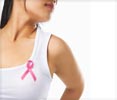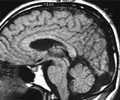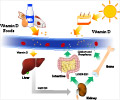Chances of survival of breast cancer patients was twice as likely in patients with high levels of vitamin D in their blood than those with low levels of the nutrient, report University of California.

Garland and colleagues performed a statistical analysis of five studies of 25-hydroxyvitamin D obtained at the time of patient diagnosis and their follow-up for an average of nine years. Combined, the studies included 4,443 breast cancer patients.
"Vitamin D metabolites increase communication between cells by switching on a protein that blocks aggressive cell division," said Garland. "As long as vitamin D receptors are present tumor growth is prevented and kept from expanding its blood supply. Vitamin D receptors are not lost until a tumor is very advanced. This is the reason for better survival in patients whose vitamin D blood levels are high."
Women in the high serum group had an average level of 30 nanograms per milliliter (ng/ml) of 25-hydroxyvitamin D in their blood. The low group averaged 17 ng/ml. The average level in patients with breast cancer in the United States is 17 ng/ml.
"The study has implications for including vitamin D as an adjuvant to conventional breast cancer therapy," said co-author Heather Hofflich, DO, UC San Diego associate professor in the Department of Medicine.
Garland recommended randomized controlled clinical trials to confirm the findings but suggested physicians consider adding vitamin D into a breast cancer patient’s standard care now and then closely monitor the patient.
Advertisement
A 2011 meta-analysis by Garland and colleagues estimated that a serum level of 50 ng/ml is associated with 50 percent lower risk of breast cancer. While there are some variations in absorption, those who consume 4,000 International Units (IU) per day of vitamin D from food or a supplement normally would reach a serum level of 50 ng/ml. Garland urged patients to ask their health care provider to measure their levels before substantially increasing vitamin D intake.
Advertisement
Source-Eurekalert















